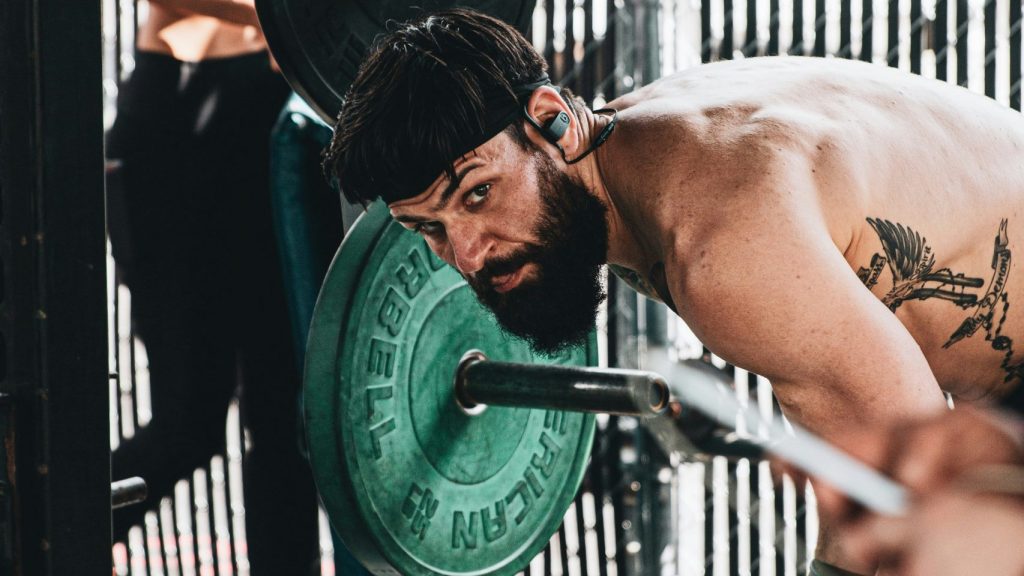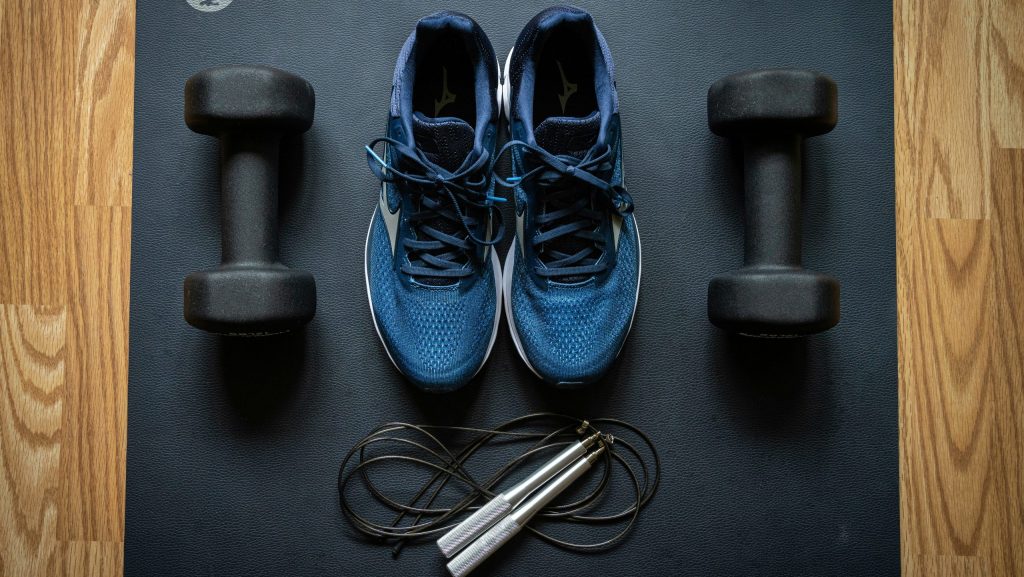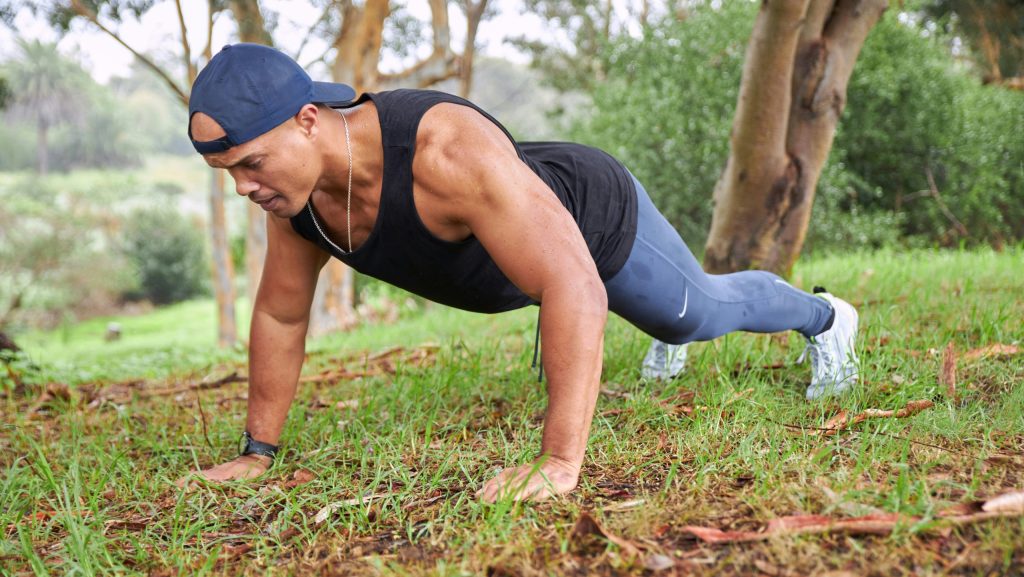Table of Contents
Starting a fitness routine in your 30s is not only feasible but also highly beneficial for long-term health and wellness. This comprehensive guide provides you with straightforward and effective exercise strategies tailored specifically for beginners in this age group. We focus on low-impact workouts suitable for those new to exercise and introduce basic strength training that is foundational for building physical fitness.
Did you know that beginning a fitness regimen in your 30s can significantly improve your health, increase longevity, and boost your overall quality of life? What steps can you take today to start improving your fitness?
Whether you are establishing a regular exercise routine, seeking practical fitness tips for beginners in their 30s, or creating a fitness plan for this age group, our guide offers essential insights. It includes workouts that are easy to integrate into your lifestyle and emphasizes starting with exercises that are achievable and effective.
- Choosing the Right Exercises for Beginners: It’s crucial to understand which exercises are best suited for your current fitness level and long-term health goals. We will explore various beginner-friendly options.
- Setting Realistic Fitness Goals: Setting achievable goals is important to keep motivation high and avoid burnout. We will guide you on how to create effective short-term achievements and long-term aspirations.
- Essential Fitness Equipment for Home: For those who prefer or need to exercise at home, we review essential, cost-effective equipment that makes a home fitness routine feasible.
- Overcoming Common Fitness Barriers: Challenges such as time management, lack of motivation, and hitting a plateau can hinder progress. We provide practical advice to overcome these obstacles.
- Nutrition and Fitness in Your 30s: Proper nutrition significantly supports your fitness goals. We’ll discuss optimal dietary practices and supplements that can enhance your workout results.
This guide is designed to provide a comprehensive overview of beginning a fitness routine that is suitable for your age and lifestyle. Each section provides detailed information to help you maintain a healthy fitness regimen.
Continue reading to gain valuable insights into starting and maintaining an active, healthy lifestyle in your 30s. Our detailed guide is packed with information not only to inform but also to motivate you to take the first steps towards a lifetime of fitness and well-being.
Selecting the Right Exercises for Beginners in Their 30s
Selecting appropriate exercises is essential when beginning a fitness routine in your 30s, primarily to ensure safety and prevent injuries. This section outlines practical strategies for assessing personal fitness levels, identifies the advantages of low-impact workouts, and describes essential strength training exercises for beginners. These exercises are particularly designed to be safe and effective for those newly engaging in physical activity at this stage of life.
Understanding Your Body’s Needs
The initial step in any new fitness routine is to accurately assess your current fitness level. This assessment helps determine the most suitable exercises that align with your physical condition and fitness goals. Performing fitness assessments that may include cardiovascular testing, strength evaluation, flexibility, and body composition analysis is recommended. These assessments guide beginners to start their exercise routines at an appropriate intensity level, which is crucial to prevent injuries and ensure progressive improvement.
Did you know that incorporating low-impact workouts like yoga and swimming can increase cardiovascular health, flexibility, and muscle endurance without stressing the joints?
Low-Impact Workouts
Low-impact workouts are recommended for beginners, especially those in their 30s who might be new to regular physical activity or may have joint concerns. Activities such as swimming, cycling, yoga, and Pilates not only offer significant health benefits but also minimize the risk of joint stress. These workouts effectively improve cardiovascular health, increase muscle strength and endurance, and enhance flexibility, serving as foundational elements for a comprehensive fitness program. Emphasizing these workouts can aid in establishing a consistent exercise habit, which is vital for long-term health and fitness.
Strength Training Basics
Incorporating basic strength training exercises into a beginner’s fitness routine is crucial for developing a solid physical foundation. Beginners should focus on exercises that strengthen the core, as well as the upper and lower body, to achieve muscular balance and overall stability. Basic exercises like squats, push-ups, and lunges are effective for beginners and do not require complex equipment.
| Exercise | Benefits |
|---|---|
| Squats | Builds lower body strength, improves core stability |
| Push-ups | Strengthens upper body, enhances muscular endurance |
| Lunges | Improves balance, strengthens legs and hips |
It is essential for beginners to learn the correct form and techniques for these exercises to avoid injuries and maximize the benefits of each movement. As strength improves, gradually introducing light weights and resistance bands can enhance muscular strength and endurance. The progression should be measured and aligned with individual capabilities to ensure safety and effectiveness.
Selecting the right exercises based on your personal health status and fitness goals is critical for a successful start to a fitness regimen. By focusing on tailored workouts, participating in low-impact activities, and learning strength training fundamentals, beginners can establish a strong base for more advanced exercises. This approach not only prevents injuries but also promotes sustainable fitness practices. Continue reading to learn about setting realistic fitness goals, which will further support a successful and effective fitness journey.

Setting Realistic Fitness Goals for Beginners in Their 30s
Setting realistic fitness goals is essential for developing a successful fitness plan, particularly for beginners in their 30s. This section outlines how to establish achievable fitness goals that are in line with personal health conditions and lifestyle preferences by using methods such as the SMART criteria. It also emphasizes the importance of maintaining a balance between immediate and long-range objectives to keep motivation high and ensure ongoing improvements in fitness.
SMART Goals for Fitness
The SMART framework is an effective tool for establishing fitness goals. It stands for Specific, Measurable, Achievable, Relevant, and Time-bound. Each component is critical to creating goals that are practical and reachable:
- Specific: Goals need to be explicit to direct focus and efforts efficiently. For example, instead of a general goal to “get fit,” a specific goal would be “to run a 5K in 30 minutes.”
- Measurable: Progress towards goals must be quantifiable. This can be done by tracking how far you run, how much weight you lift, or how many active minutes you accumulate each week.
- Achievable: Goals should be challenging yet within reach. This requires considering your current fitness levels and the time you have available for exercise.
- Relevant: Goals must align with your personal health requirements and lifestyle. If you have joint issues, focusing on flexibility or strength might be more beneficial than endurance running.
- Time-bound: Assigning a deadline to goals provides motivation and a timeframe for achievement.
Utilizing SMART criteria for setting fitness goals establishes clear objectives and simplifies the process of planning workouts and tracking progress.
Short-term vs. Long-term Goals
It is important to balance short-term and long-term goals to maintain enthusiasm and ensure steady progress. Short-term goals act as immediate motivators and are often easier to achieve, which helps build momentum toward larger, long-term goals. For instance, a short-term goal could be attending three fitness classes per week, which supports a long-term goal of losing 20 pounds.
Long-term goals typically involve more significant outcomes that reflect deeper life aspirations, such as achieving a healthy weight, maintaining an active lifestyle, or enhancing overall well-being. Success in long-term goals results from the consistent achievement of various short-term goals. Managing both types of goals effectively prevents feelings of being overwhelmed and keeps you focused on broader objectives.
Tracking Progress Effectively
Monitoring your progress is crucial for keeping motivated and adjusting goals as needed. Several tools and methods are useful for this purpose:
- Fitness Apps: These apps can monitor workouts, dietary intake, and overall physical activity. They often feature progress charts and reminders, which help in staying engaged and aware of achievements and areas needing improvement.
- Wearable Technology: Devices like fitness trackers and smartwatches are useful for tracking daily activities, heart rate, sleep quality, and stress levels, offering comprehensive insights into your fitness.
- Journals: Maintaining a fitness journal allows for detailed records of workouts, personal feelings, and both physical and mental changes over time.
Did you know that setting SMART goals can increase the likelihood of achieving fitness success by up to 80%? This method ensures that goals are clear, measurable, and time-bound, making them more attainable.
Establishing realistic fitness goals is vital for keeping focused and motivated throughout your fitness journey. By employing SMART criteria for your goal-setting, balancing short and long-term objectives, and effectively monitoring your progress, you can achieve lasting results. Continue reading to learn about essential fitness equipment for home workouts, which will further support your efforts to meet these goals. This structured approach ensures that your fitness activities are both effective and beneficial.

Essential Fitness Equipment for Home Gyms
Establishing a home gym significantly enhances your ability to maintain a consistent fitness regimen, particularly beneficial for individuals starting fitness routines in their 30s. This section outlines essential home fitness equipment that is both functional and economical, facilitating regular exercise without the need to leave your residence.
Cost-effective Equipment
Building a home gym need not require large financial outlays. Several affordable tools provide comprehensive workouts. Resistance bands are cost-effective and versatile, suited for a range of exercises that target major muscle groups. Dumbbells, available in various weights, allow for tailored strength training as your fitness improves. Yoga mats are fundamental for any home gym, providing a stable surface for yoga and other floor exercises at minimal cost.
These budget-friendly options enable a variety of workouts and are ideal for those new to exercise, offering flexibility without significant initial investment.
Did you know that adjustable dumbbells can replace up to 15 sets of traditional weights, saving significant space and cost in a home gym setup?
Space-Saving Fitness Tools
Selecting equipment that is effective yet compact is crucial for those with limited living spaces. Foldable treadmills and collapsible weight benches exemplify equipment designed to save space; they can be easily stored when not in use. Door-mounted pull-up bars are another excellent option that requires no floor space, ideal for enhancing upper body strength.
Adjustable dumbbells and kettlebells provide numerous weight settings in one device, eliminating the need for multiple sets of weights and reducing clutter. Stability balls, which can be inflated for use and deflated for storage, are perfect for flexibility and core strengthening exercises, adaptable for those with minimal storage space.
Equipment Reviews and Recommendations
When selecting home gym equipment, considering product quality and consulting user reviews ensure that your investments are sound. Reviews of foldable treadmills, for example, should not only discuss their compact nature but also assess stability, durability, and the features they offer, such as incline and speed adjustments.
Adjustable dumbbells should be evaluated for ease of weight adjustment and ergonomic design. Comprehensive reviews that include user experiences and expert opinions can guide you to the best choices for your home gym, ensuring functionality and user satisfaction.
| Equipment Type | Key Benefits |
|---|---|
| Adjustable Dumbbells | Saves space, adjustable for various strength levels |
| Foldable Treadmill | Easy storage, suitable for small spaces |
| Yoga Mat | Versatile use, essential for floor exercises |
Choosing the right equipment is essential for creating an effective and accommodating home gym. By selecting cost-effective, space-saving equipment and relying on thorough product reviews, you can establish a flexible and inviting workout environment. The next section will discuss overcoming common fitness barriers, further aiding your commitment to maintaining fitness goals under various circumstances. This strategic approach ensures that your home fitness setup is both practical and conducive to achieving long-term health benefits.

Addressing Common Fitness Barriers
Effectively addressing common fitness barriers is essential for anyone initiating a fitness regimen in their 30s. This section focuses on crucial aspects such as efficient time management, sustaining motivation, and strategies for progressing when improvements in fitness seem to stall, thus supporting continuous improvement in your fitness journey.
Time Management Tips
Efficient time management is critical for incorporating exercise into busy schedules. Identifying potential times during the week when exercise can be integrated is the first step. This may involve exercising early in the morning, during lunch breaks, or in the evening, depending on personal and work commitments.
An effective approach is to segment workouts into shorter sessions throughout the day. For example, conducting three 10-minute exercise sessions can be as beneficial as one continuous 30-minute session. This strategy not only makes the exercise regimen more manageable but also helps to maintain an active metabolism throughout the day. Additionally, integrating physical activities into daily routines, such as cycling to work or using the stairs, can maximize your daily exercise intake without requiring additional dedicated time.
Did you know that breaking up workouts into shorter, more frequent sessions can increase metabolism and improve fitness outcomes compared to one long session?
Maintaining Motivation
Maintaining motivation is critical for ongoing participation in fitness activities. Setting clear, achievable goals is fundamental for directing efforts and experiencing a sense of achievement. Regularly varying your exercise routine can prevent boredom and keep the activities engaging. Experimenting with new workout types or modifying existing routines every few weeks can help keep the exercises interesting and effective.
Recording progress is another vital motivational strategy. Noting enhancements in strength, changes in body measurements, or consistent workout adherence can substantially elevate motivation. Involving peers or joining community exercise groups can also provide the necessary encouragement and make the exercise sessions more enjoyable.
Dealing with Plateaus
Experiencing a plateau in fitness improvement is common and can lead to frustration. To navigate this, it is advisable to first reassess and then intensify your workout regimen. Enhancing the intensity or incorporating different exercises can provide new challenges to the body, prompting further improvements.
Diversifying your workout routine is also beneficial. For instance, adding strength training to a predominantly cardio-focused regimen or incorporating flexibility exercises like yoga can offer new stimuli for body growth and fitness enhancement. If progress continues to stall, consulting a fitness professional for personalized advice and tailored workout adjustments can be particularly effective.
- Increase workout intensity to challenge your body in new ways.
- Incorporate a variety of physical activities to engage different muscle groups.
- Seek personalized recommendations from fitness professionals to optimize your exercise plan.
Effectively managing fitness barriers can significantly enhance the consistency and effectiveness of your workout regimen. By applying robust time management strategies, utilizing motivational techniques, and adjusting your workout approach to push through plateaus, you can effectively sustain your fitness activities. The subsequent section will explore the role of nutrition and fitness in your 30s, offering insights into how dietary choices can support your physical activities. This structured approach ensures a comprehensive strategy for maintaining fitness and health.

Nutrition and Fitness in Your 30s
Nutrition plays a critical role in enhancing fitness, especially for individuals in their 30s embarking on or intensifying their workout routines. This section details how a balanced diet, suitable supplements, and proper hydration contribute substantially to fitness outcomes and general health.
Balanced Diet for Beginners
A balanced diet is essential for supporting regular exercise, particularly for beginners aiming to optimize health and fitness results. It should include diverse nutrients from all food groups: carbohydrates for energy, proteins for muscle repair, fats for energy and hormone production, and a variety of vitamins and minerals for overall health. Complex carbohydrates like whole grains, fruits, and vegetables provide sustained energy, while proteins from sources such as lean meats and legumes are vital for muscle recovery post-exercise.
Healthy fats from nuts, seeds, and fish contribute to long-term energy and hormonal balance. Vitamins such as B vitamins are important for energy metabolism, and minerals like iron and calcium are crucial for maintaining bodily functions during increased physical activity.
Supplements and Fitness
Supplements can complement a diet by filling nutritional gaps, especially useful for those with specific fitness goals or dietary limitations. Protein supplements, like whey or plant-based powders, are beneficial for meeting higher protein needs efficiently. Creatine is well-regarded for boosting performance in strength and high-intensity training by enhancing energy production in muscles.
Multivitamins can be helpful for ensuring adequate intake of essential nutrients, supporting overall health. However, it is important to use supplements thoughtfully and ideally under professional guidance to avoid negative effects from excessive use.
Did you know that consuming protein within 30 minutes after exercising can significantly enhance muscle recovery and growth?
Hydration and Exercise
Maintaining hydration is vital for optimal physical performance and recovery. Water regulates body temperature, transports nutrients, and helps with waste removal. During exercise, proper hydration is crucial as sweat loss increases, which if not compensated for, can lead to dehydration, affecting muscle function and recovery.
It is recommended to hydrate before, during, and after exercise to maintain performance and aid in recovery. Drinking at least 500 ml of water two hours before exercise, sipping water regularly during the workout, and rehydrating after exercise are key practices for effective hydration management.
- Protein Powders: Helps meet protein requirements efficiently, supports muscle repair.
- Creatine: Enhances strength and muscle mass, aids in quick energy recovery during workouts.
- Multivitamins: Fills dietary gaps, supports overall health and wellness.
In summary, integrating effective nutritional practices with your exercise routine is crucial for maximizing physical health and achieving fitness goals. By focusing on a balanced diet, sensible use of supplements, and maintaining hydration, you can effectively support your body’s needs throughout your fitness activities. This comprehensive approach ensures you are well-equipped to maintain and enhance your fitness levels effectively, providing a solid foundation for health and well-being.

Conclusion: Beginner Exercises for Starting Fitness in Your 30s
This comprehensive guide has detailed the essential steps to initiate and sustain a fitness regimen in your 30s, emphasizing the selection of appropriate exercises, setting achievable goals, choosing the right equipment, navigating common challenges, and understanding the crucial role of nutrition.
Understanding the Basics of Fitness and Nutrition
Initiating a fitness routine requires understanding which exercises are suitable based on your current fitness level. It’s important to engage in activities that enhance endurance and strength without causing injury, helping you to progressively improve your physical health.
Achieving Fitness Goals
Achieving fitness goals involves more than just exercising; it requires setting specific, measurable, achievable, relevant, and time-bound (SMART) goals. These goals help in maintaining focus and measuring progress. They provide motivation by setting clear targets and the satisfaction of achieving them.
“Embrace the change, set your goals, equip your space, and nourish your body to unlock a healthier, more active life in your 30s and beyond.”
Equipping Your Home Gym
For those preferring or needing to exercise at home, choosing the right equipment is crucial. Selecting versatile, cost-effective, and space-efficient equipment can make working out more accessible and enjoyable, and helps in maintaining a regular exercise schedule.
Addressing Challenges in Fitness
Addressing common fitness challenges such as time management, motivation, and fitness plateaus is vital for continuous improvement. Effective strategies include integrating exercise into daily routines, keeping the exercise regimen interesting by varying activities, and adjusting the intensity of workouts to push through periods of no apparent progress.
Enhancing Fitness Through Nutrition
Nutrition significantly affects fitness outcomes. A balanced diet rich in carbohydrates, proteins, and healthy fats provides the necessary energy and nutrients for exercise and recovery. Hydration is also critical, especially around workout times, to ensure optimal performance and recovery.
Starting and maintaining fitness in your 30s encompasses a holistic approach that includes selecting appropriate exercises, achieving set goals, utilizing suitable equipment, overcoming obstacles, and adhering to proper nutrition. By following the guidance provided in this article, you can establish a balanced and effective fitness regimen that fosters health and well-being for years to come. This guide aims to empower you to take control of your fitness journey, encouraging you to start today for a healthier future.